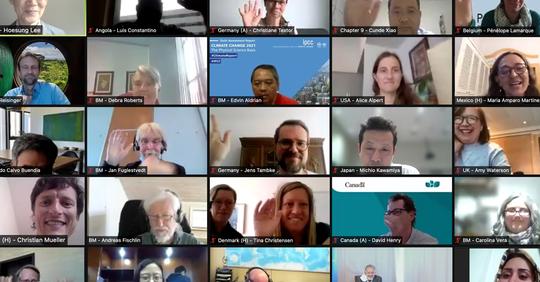The new report from the UN’s Intergovernmental Panel on Climate Change (IPCC) marks the latest comprehensive effort by the world’s climate scientists to summarise the evidence underpinning their discipline
As its name implies, the sixth assessment report (AR6) – the first part of which, working group 1 (WG1), was published this week – is the latest in a series which is updated every six or seven years to reflect new evidence on climate change.
In many ways, the IPCC’s message has remained consistent since its inception, but over the years scientists have become increasingly clear about the threat posed by climate change and humanity’s role in causing it.
Since the fifth assessment report (AR5) was published in 2013-14, global warming records have been repeatedly broken and extreme weather events have been linked with greater confidence to rising temperatures.
In this article, Carbon Brief has asked an array of climate scientists, including many who contributed to the WG1 report on the “physical science basis” of climate change, what they think are its most important insights.
Maisa Rojas Corradi
Director (AR6 coordinating lead author)
Center for Climate and Resilience Research, Santiago
Unlike AR4 and AR5, which had dedicated palaeoclimate chapters, paleo information in the AR6 can be found across the report. Palaeoclimate information is integrated into assessment findings as one of the “multi lines of evidence”. This AR6 approach had its risks, but, ultimately, I believe the result has been very successful. Many of the palaeo findings are the basis for the key message: “Many of the changes observed in the climate are unprecedented in thousands, if not hundreds of thousands of years…”
Furthermore, as part of the AR6, all three Working Groups have adopted a common risk framework. The WGI contribution to this risk assessment is the climatic impact drivers and the assessment of the likelihood of their changes. Both the SPM and the underlying chapters describe low-likelihood, high-impact outcomes (LLHI) as outcomes whose probability of occurrence is low but whose potential impacts on society and ecosystems are high.
Low-likelihood high impact events are important to understand and communicate as they form an integral part of a comprehensive risk assessment. The importance of communicating low-likelihood high-impact events has been strongly stated in many government review comments, they are introduced in detail in chapter 1 and further developed in chapter 12, and are also an important aspect of the ‘handshake’ with WG2.
Read at Carbon Brief.





